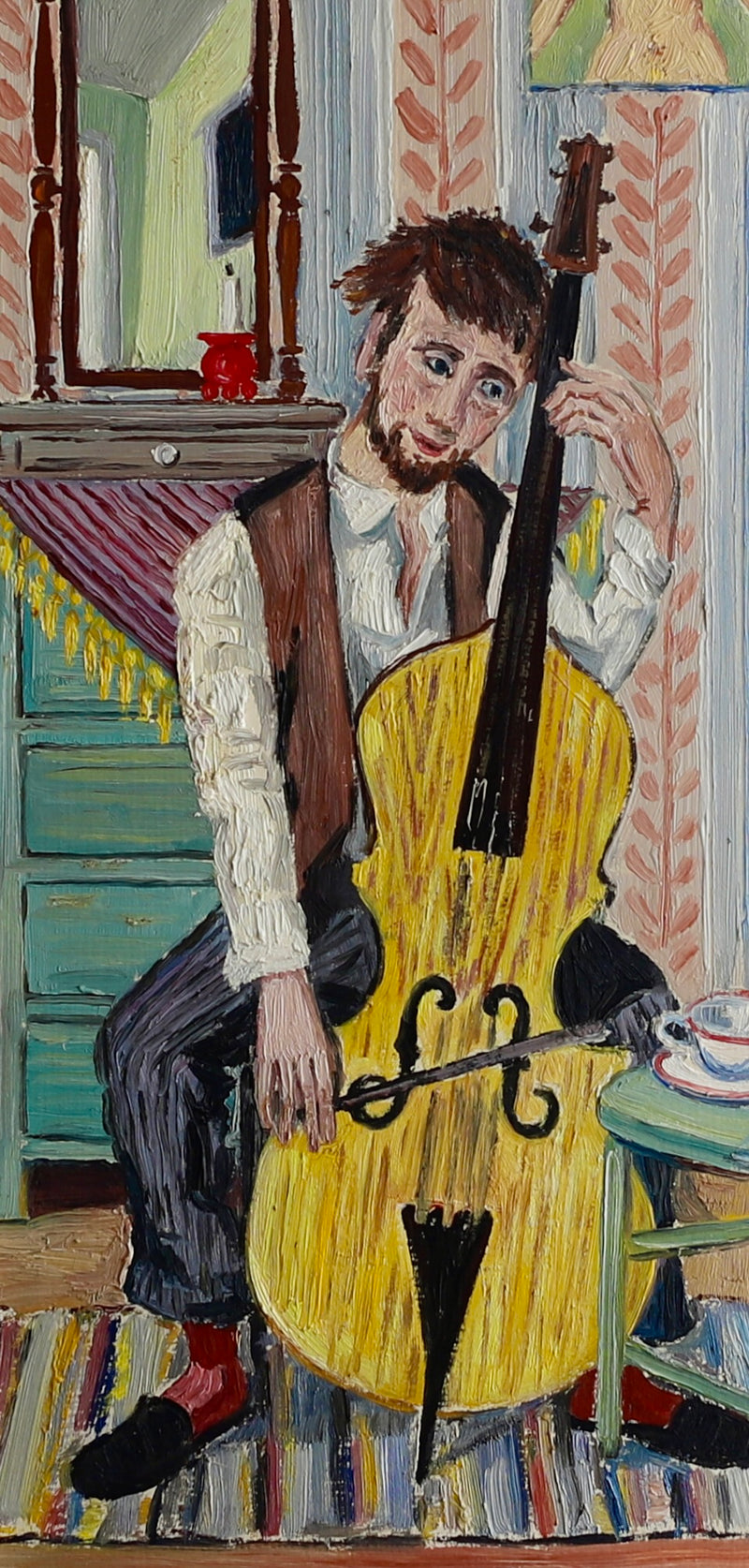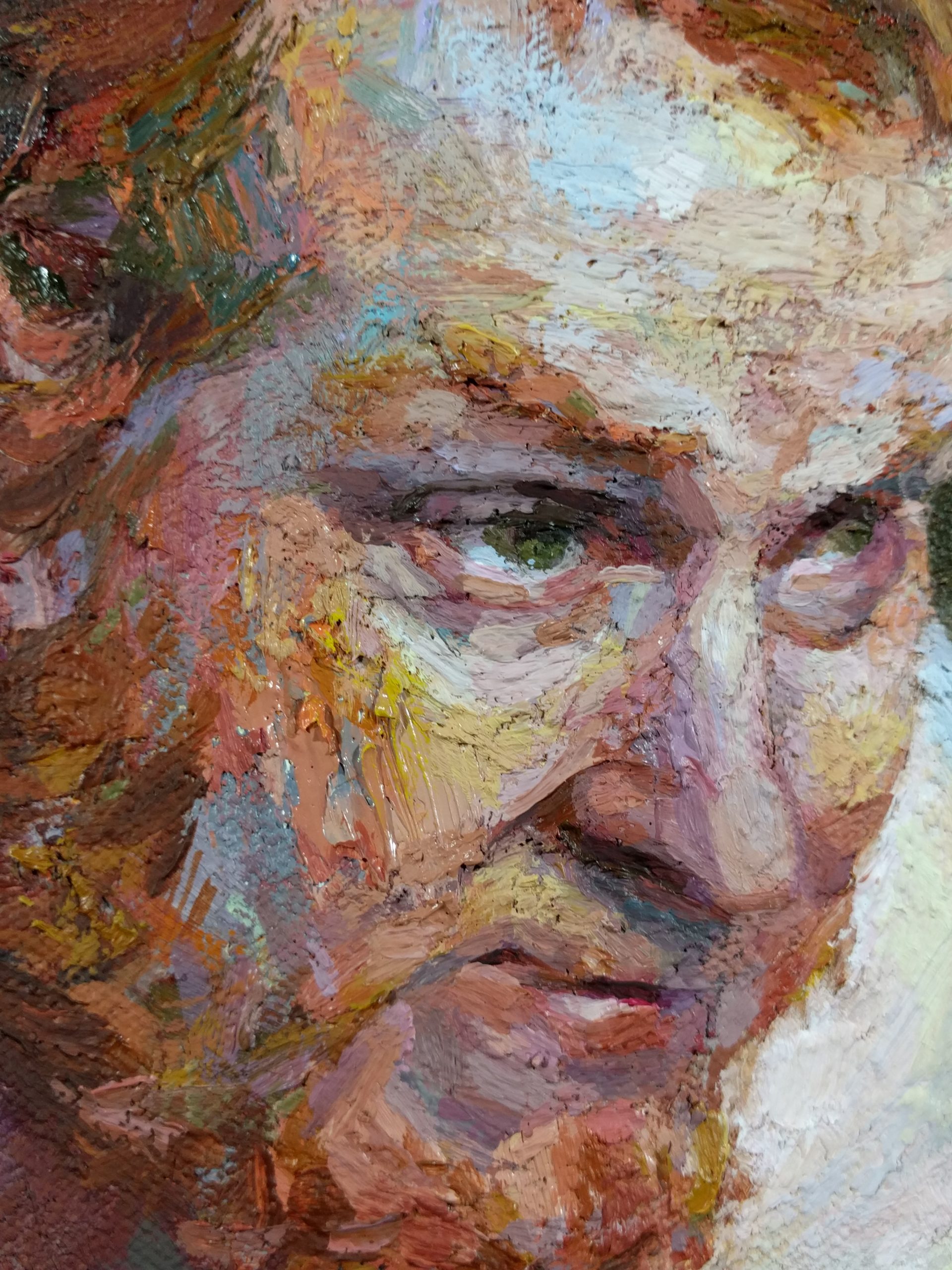The Evolution of Art: A Comprehensive Overview to Figurative Oil Painting
The Evolution of Art: A Comprehensive Overview to Figurative Oil Painting
Blog Article
The Role of Emotion and Expression in Figurative Oil Painting: An In-Depth Evaluation of Subject and Composition
The interplay of emotion and expression in figurative oil paint offers as a critical lens with which one can check out the intricate relationship between subject issue and structure. Artists harness different techniques, from shade option to brushstroke characteristics, to cultivate emotional resonance within their jobs.
Comprehending Feeling in Art
Feeling in art acts as a powerful channel for expression, allowing musicians to communicate complex sensations with their work. In figurative oil painting, this psychological depth is frequently depicted through the depiction of the human figure, recording the subtleties of human experience. The option of topic, shade combination, and brushwork all add to the emotional vibration of an item.
Artists regularly attract upon individual experiences, social problems, or global styles to evoke sensations in the visitor. A portrait might mirror vulnerability, while a vibrant figure in motion can symbolize liberty or turmoil. These psychological threads attach the audience to the artwork, cultivating a dialogue that goes beyond the aesthetic medium.
In addition, the interaction in between light and darkness can enhance emotional strength, guiding the audience's gaze and accentuating certain elements within the make-up. The usage of appearance in oil painting even more includes layers of intricacy, inviting a tactile feedback that enhances the emotional experience. In general, recognizing feeling in art is critical for valuing the nuances that define figurative oil painting, as it transforms mere representation into a profound expedition of the human condition.
Crucial Element of Structure
In the world of metaphorical oil painting, the structure serves as the underlying structure that arranges aesthetic elements and improves the psychological story. Necessary parts of structure include balance, contrast, centerpiece, and rhythm, each adding to the total effect of the art work.
Equilibrium describes the distribution of aesthetic weight within the paint, which can be attained via balanced or unbalanced arrangements. A healthy composition gives stability, permitting the viewer to involve with the piece harmoniously - figurative oil painting. Comparison, on the other hand, entails juxtaposing various elements, such as light and dark or warm and cool colors, to assist the customer's eye and evoke psychological actions
The focal factor is crucial, as it routes attention to the most substantial part of the painting, commonly highlighting the emotional core of the story. By skillfully incorporating these key components, musicians can craft compelling and mentally powerful figurative oil paints that astound and engage their audience.
Topic and Its Effect
Subject plays an essential function in figurative oil painting, as it not just serves as the structure for the story yet also forms the visitor's interpretation and psychological interaction with the artwork. The choice of subject issue-- be it a singular number, a group dynamic, or a thematic depiction-- straight affects the psychological environment conveyed to the target market.

As an example, pictures usually evoke individual connections, revealing the ins and outs of human expression and personality, while scenes illustrating common tasks can create a sense of blog here belonging or fond memories. In addition, the historic and social context of the subject matter enhances the audience's understanding, prompting much deeper reflections on societal norms, values, and the human problem.
Various topics also produce varying levels of engagement; a significant dispute portrayed via numbers in tension might elicit feelings of anxiety or compassion, while calm landscapes can conjure up tranquility and consideration. Inevitably, the effect of subject in metaphorical oil painting is extensive, as it acts as a channel for emotional resonance, directing the viewer's reaction and interpretation, and fostering a link in between the art work and the viewer. This interplay is vital for the effective communication of the musician's intent.
Strategies for Stimulating Feelings
The efficiency of metaphorical oil paint in sharing feelings is dramatically influenced by the techniques employed by the musician. One of one of the most important approaches is the use of shade theory, where the calculated selection of shades can stimulate certain emotional responses. Cozy shades, such as reds and oranges, typically generate sensations of interest or hostility, while cooler tones like blues and greens tend to evoke peace or unhappiness.
An additional necessary strategy is the manipulation of light and shadow, referred to as chiaroscuro. This method enhances the three-dimensionality of figures, producing significant contrasts that can escalate psychological depth. The positioning of light can direct visitors' feelings, highlighting particular elements of the structure.
Brushwork likewise plays a critical function; loose, meaningful strokes can convey energy and spontaneity, whereas smoother methods could recommend serenity or precision. The arrangement of topics within the structure can affect emotional impact. Close closeness can recommend affection, while distance might indicate isolation.
Ultimately, the combination of these techniques enables artists to craft stories that reverberate with the Home Page customer, transforming a mere visual experience into an expressive psychological journey. - figurative oil painting

Instance Researches of Noteworthy Functions
Checking out notable jobs of figurative oil paint exposes exactly how various methods are utilized to stimulate powerful emotions. One excellent situation is Edvard Munch's "The Scream," where the altered number and swirling background convey existential fear. Munch's use of shade-- vivid oranges and deep blues-- escalates the emotional effect, showcasing just how palette choices can shape customer experience.
An additional substantial work is Pablo Picasso's "Les Demoiselles d'Avignon." Below, fragmented forms and strong brushstrokes show a tumultuous psychological landscape, testing traditional depictions of the women figure. Picasso's cutting-edge composition not only catches the viewer's attention but likewise invites reflection on themes of identification and sexuality.
Furthermore, Frida Kahlo's "The Two Fridas" supplies a poignant exploration of duality and self-identity. The contrasting figures, linked by a common heart, exhibit Kahlo's emotional depth and individual narrative. figurative oil painting. Her meticulous focus to detail and symbolic aspects offer to engage visitors on a natural degree
These situation studies underscore the extensive link between feeling and structure in metaphorical oil paint, revealing exactly how artists harness strategy to communicate intricate sensations and narratives that resonate throughout time and society.

Verdict
In verdict, the interplay of feeling and expression in metaphorical oil painting dramatically improves the audience's experience and analysis of the artwork. With a mindful selection of subject and compositional strategies, musicians share extensive web stories that reverberate on both global and individual degrees. The application of color chiaroscuro, concept, and brushwork additional amplifies emotional depth, changing each canvas right into an effective reflection of the intricacies of the human experience.
In metaphorical oil painting, this emotional depth is usually portrayed via the representation of the human number, recording the subtleties of human experience.In addition, the interplay in between light and shadow can magnify psychological intensity, directing the viewer's gaze and attracting interest to particular components within the composition. The use of texture in oil painting even more includes layers of intricacy, inviting a tactile reaction that enhances the emotional experience.The focal factor is critical, as it guides interest to the most considerable part of the painting, commonly highlighting the emotional core of the story. Ultimately, the effect of subject matter in metaphorical oil paint is extensive, as it serves as an avenue for emotional vibration, directing the visitor's feedback and analysis, and cultivating a link between the observer and the art work.
Report this page